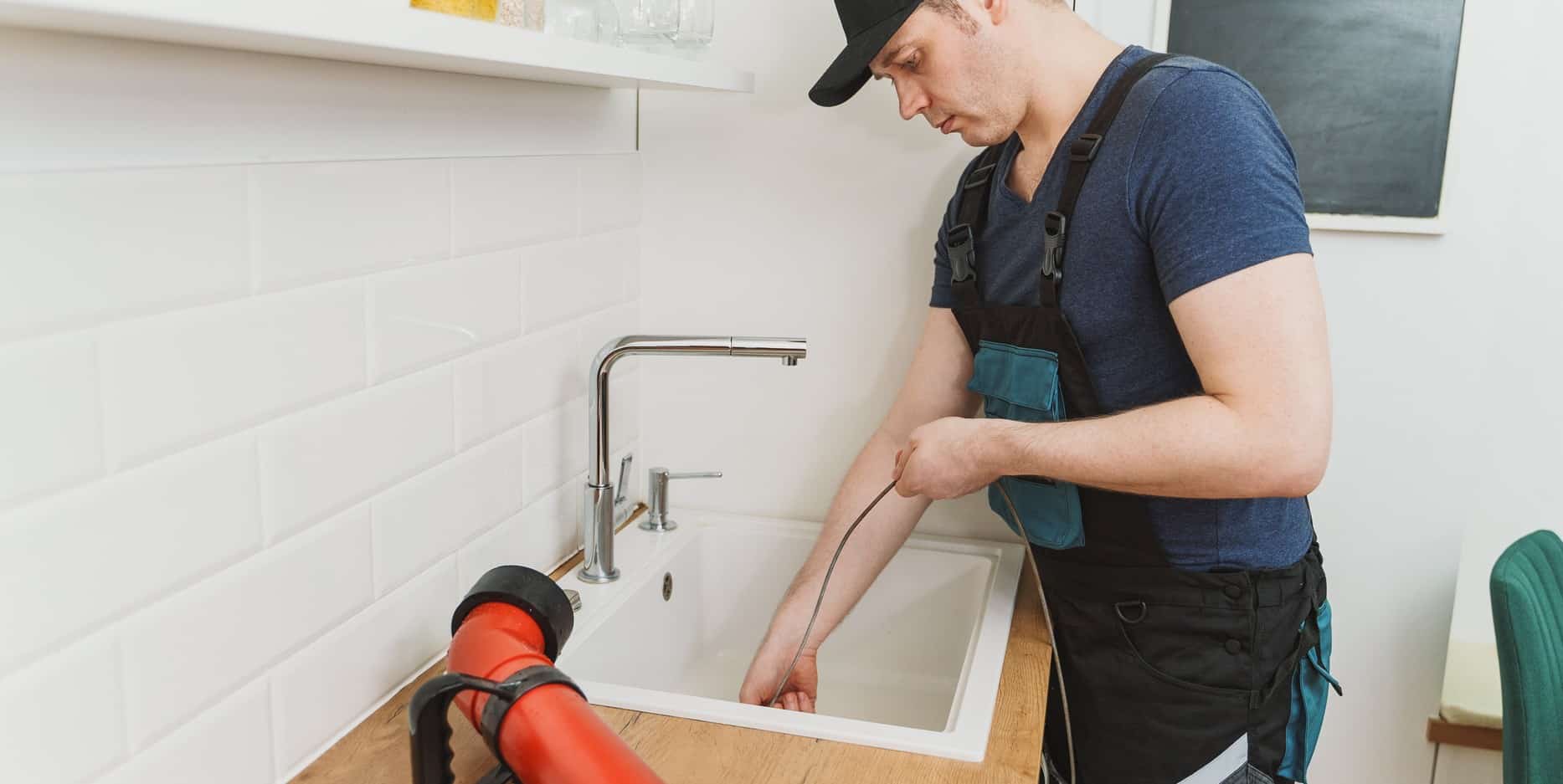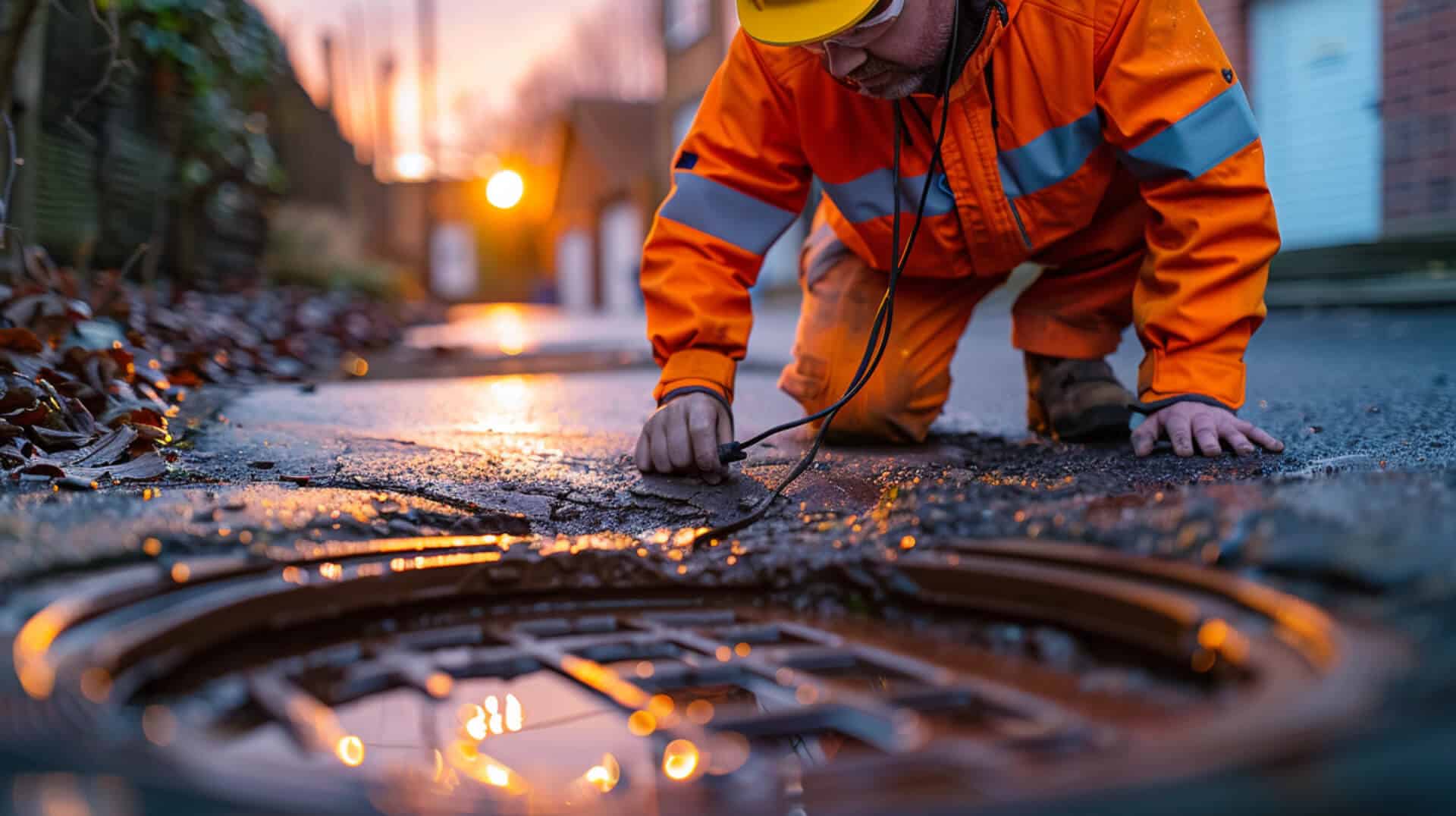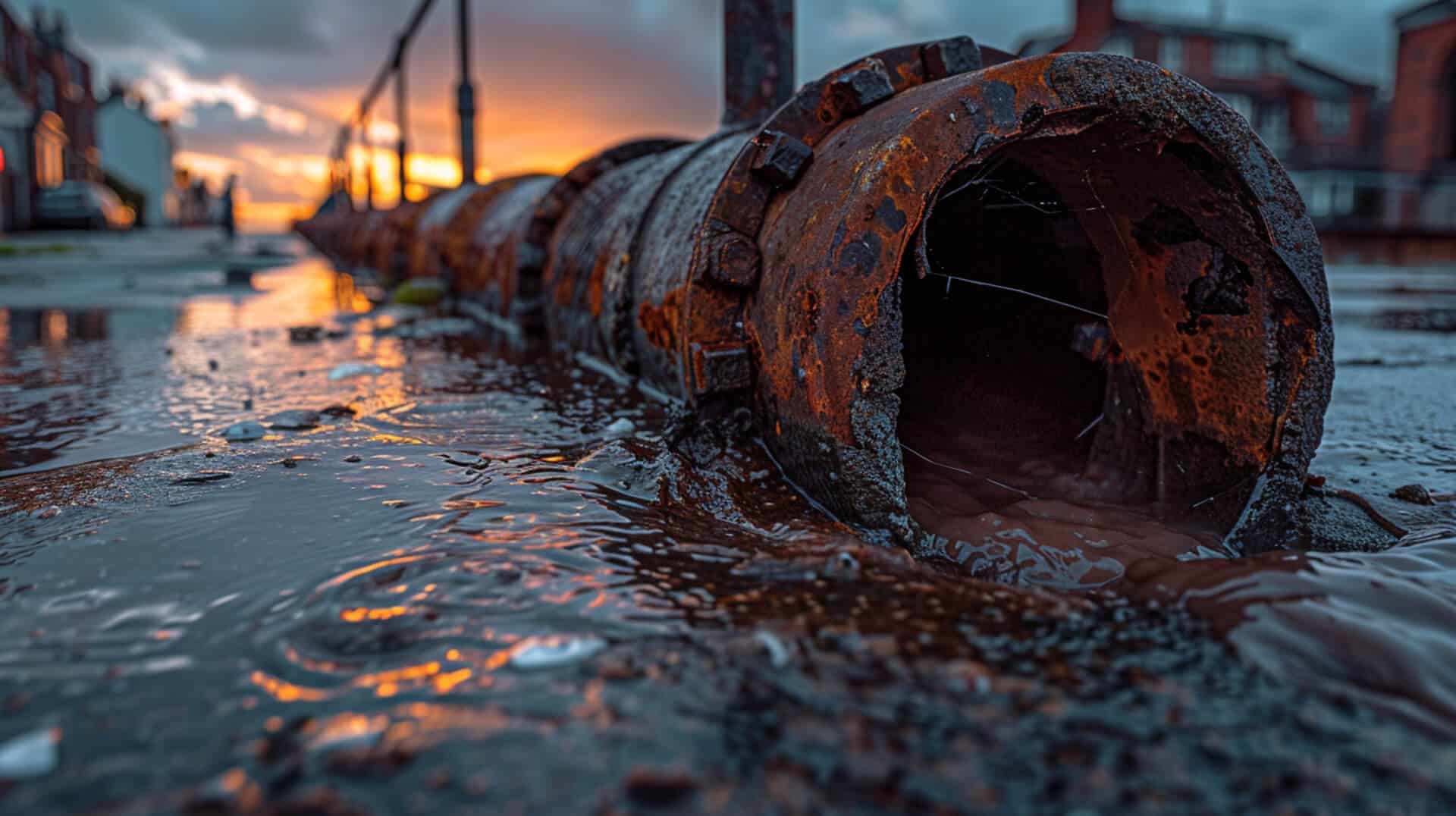 Does Toilet Paper Cause Drain Blockages?
Does Toilet Paper Cause Drain Blockages?

What Causes Blocked Drains?
Blocked drains are a common issue faced by many property owners, business owners, and facility managers. Understanding the causes of blocked drains is essential for effective prevention and maintenance. This guide will explore the various factors contributing to drain blockages, with a particular focus on toilet paper build-up.
Common Causes of Blocked Drains
Blocked drains can result from various factors, including:
- Hair and Soap Scum Build-Up: Common in bathroom drains, where hair combines with soap to form clogs.
- Food Scraps and Grease: Kitchen drains often get blocked by food scraps, grease, and oil.
- Foreign Objects: Items such as toys, wipes, feminine hygiene products, cotton swabs, and paper towels can cause blockages.
- Tree Roots: Roots infiltrate pipes, leading to severe blockages.
- Mineral Build-Up: Hard water causes mineral accumulation in pipes.
- Ageing and Incorrectly Installed Pipes: Corroded or damaged pipes can lead to blockages.
- Non-Flushable Items: Wet wipes, feminine hygiene products, cotton swabs, and paper towels should not be flushed.
- Outside Debris: Leaves and twigs can clog outdoor drains.
- Sewer Line Back-Ups: Blockages in the main sewer line affect home drains.
- Leaking Faucets: Water build-up from leaks can lead to blockages.
Importance of Addressing Blocked Drains Promptly
Addressing blocked drains promptly is crucial to prevent further damage and potential health hazards. Ignoring blockages can lead to:
- Water Damage: Overflowing water can damage property.
- Health Risks: Stagnant water and waste can harbour harmful bacteria.
- Increased Repair Costs: Delaying repairs can result in more extensive and costly damage.
How Toilet Paper Contributes to Drain Blockages
Toilet paper is a common cause of drain blockages, particularly when used excessively or when using types that do not dissolve easily. Factors contributing to toilet paper build-up include:
- Excessive Use: Using too much toilet paper at once can clog toilets.
- Quality and Dissolvability: Thicker, lotion-infused, or multi-ply toilet papers take longer to dissolve and are more likely to cause clogs.
Guide Overview
This guide will cover the following topics in detail:
- Understanding Toilet Paper Build-Up: How excessive use of toilet paper leads to blockages and the types of toilet paper that are more prone to causing clogs.
- Impact of Excessive Toilet Paper Use: Consequences of using too much toilet paper and how it affects plumbing systems.
- Types of Toilet Paper and Their Effects: Different types of toilet paper and their impact on drain systems.
- Preventive Measures for Toilet Paper Build-Up: Best practices for using toilet paper responsibly and preventing clogs.
- Common Causes of Blocked Drains Beyond Toilet Paper: Other common items that cause drain blockages.
- Tree Roots and Their Role in Blockages: How tree roots infiltrate and block pipes.
- Mineral Build-Up and Hard Water Issues: How hard water leads to mineral accumulation in pipes.
- Ageing and Incorrectly Installed Pipes: How ageing pipes contribute to blockages.
- Immediate Actions for Suspected Blockages: Steps to take if a blockage is suspected.
- Long-Term Maintenance Strategies: Best practices for regular drain maintenance.
Understanding Toilet Paper Build-Up
Toilet paper build-up is a common cause of blocked drains. Understanding how it occurs and how to prevent it is essential for maintaining a functional plumbing system.
How Excessive Use of Toilet Paper Leads to Blockages
Excessive use of toilet paper can lead to blockages by overwhelming the drainage system. When too much toilet paper is flushed at once, it can accumulate and form clogs. This is particularly problematic in older plumbing systems or those with narrow pipes.
Types of Toilet Paper Prone to Causing Clogs
Certain types of toilet paper are more likely to cause clogs. These include:
- Thicker Toilet Paper: Thicker varieties take longer to dissolve and can accumulate more easily.
- Lotion-Infused Toilet Paper: These types often contain additives that reduce their ability to break down in water.
- Extra Soft Toilet Paper: While comfortable, these can be less dissolvable and more prone to causing blockages.
Importance of Dissolvability in Toilet Paper
Dissolvability is a crucial factor in preventing toilet paper build-up. Toilet paper that dissolves quickly in water is less likely to cause clogs. Using dissolvable or bamboo toilet paper can significantly reduce the risk of blockages.
Identifying Early Signs of Toilet Paper Build-Up
Property owners can identify early signs of toilet paper build-up by observing the following:
- Slow Draining: Water drains slowly from the toilet bowl.
- Gurgling Sounds: Unusual sounds from the plumbing system when flushing.
- Water Backing Up: Water rising in the toilet bowl or other drains when flushing.
By recognising these signs early, property owners can take preventive measures to avoid severe blockages. Regular maintenance and mindful use of toilet paper are key strategies in managing and preventing toilet paper build-up.
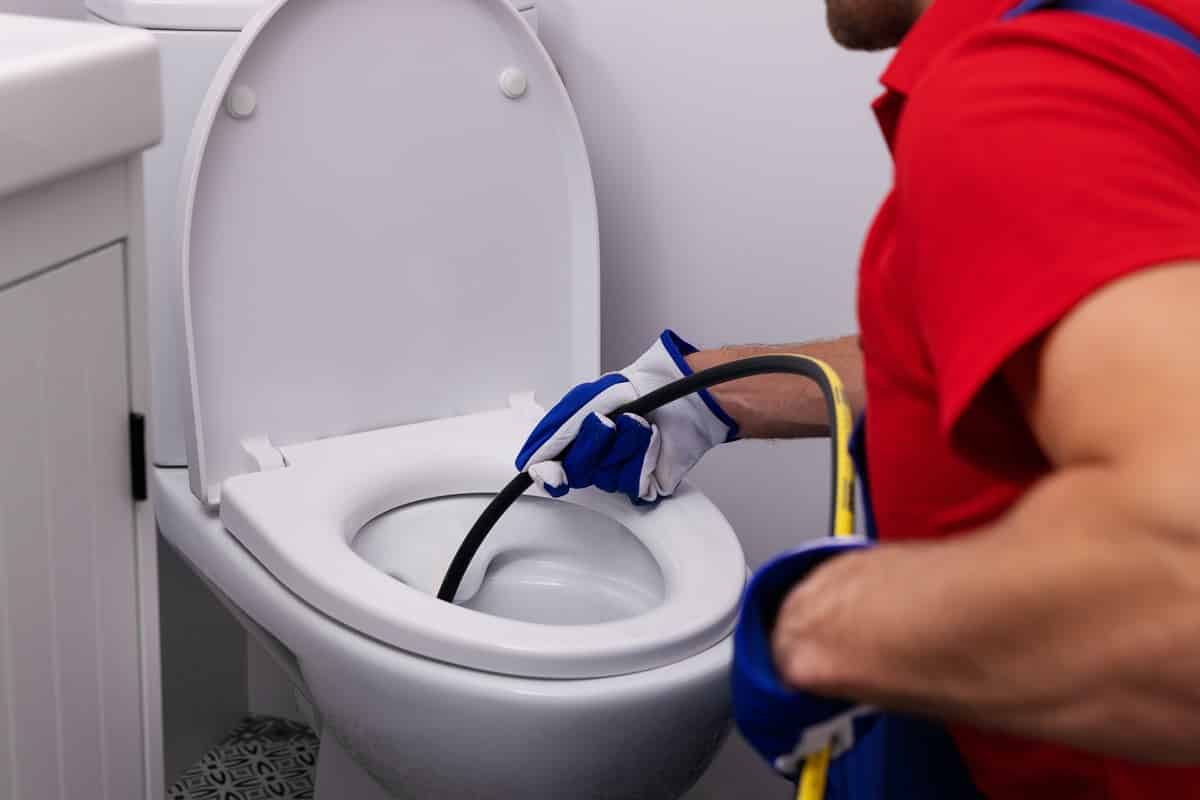
Impact of Excessive Toilet Paper Use
Excessive use of toilet paper can have significant consequences on plumbing systems. Understanding these impacts and recognising the signs of a clog can help mitigate issues.
Consequences of Using Too Much Toilet Paper
Using too much toilet paper can lead to several problems:
- Clogged Drains: Excessive toilet paper can accumulate and block the pipes, leading to slow drainage or complete blockages.
- Increased Maintenance Costs: Frequent clogs may require professional plumbing services, increasing maintenance expenses.
- Water Waste: Multiple flushes to clear clogs can result in unnecessary water usage.
Effects on Plumbing Systems
Excessive toilet paper use affects plumbing systems in various ways:
- Pipe Blockages: Large amounts of toilet paper can create dense clogs that are difficult to dissolve.
- Strain on Septic Systems: Overloading septic systems with toilet paper can lead to backups and system failures.
- Reduced Efficiency: Blocked pipes reduce the efficiency of the plumbing system, causing slow drainage and potential overflows.
Signs of a Toilet Clogged Due to Toilet Paper
Identifying a toilet paper clog early can prevent more severe issues. Common signs include:
- Slow Draining: Water takes longer to drain from the toilet bowl.
- Gurgling Sounds: Unusual noises from the plumbing system when flushing.
- Water Backing Up: Water rises in the toilet bowl or other drains when flushing.
Mitigating Excessive Use
To mitigate the effects of excessive toilet paper use, consider the following:
- Use Less Toilet Paper: Encourage the use of only necessary amounts.
- Choose Dissolvable Toilet Paper: Opt for toilet paper that dissolves quickly in water.
- Educate Household Members: Inform everyone about the importance of using toilet paper sparingly.
- Regular Maintenance: Schedule regular plumbing inspections to catch potential issues early.
By adopting these practices, property owners can maintain a functional plumbing system and avoid the complications associated with excessive toilet paper use.
Types of Toilet Paper and Their Effects
Understanding the different types of toilet paper and their impact on drain systems is crucial for preventing blockages.
Different Types of Toilet Paper
Toilet paper comes in various types, each with distinct characteristics:
- Standard Toilet Paper: Commonly used in households, available in single-ply and multi-ply options.
- Septic-Safe Toilet Paper: Designed to dissolve quickly, reducing the risk of clogs.
- Bamboo Toilet Paper: Eco-friendly and highly dissolvable.
- Lotion-Infused Toilet Paper: Contains additives for softness but may dissolve slower.
Impact of Thicker and Softer Toilet Papers
Thicker and softer toilet papers can significantly impact drain systems:
- Thicker Toilet Paper: Multi-ply options are more comfortable but take longer to dissolve, increasing the risk of blockages.
- Softer Toilet Paper: Often contains additives that reduce dissolvability, leading to potential clogs.
Why Bamboo or Dissolvable Toilet Paper is Recommended
Bamboo and dissolvable toilet papers are recommended for several reasons:
- High Dissolvability: These types break down quickly in water, reducing the likelihood of clogs.
- Eco-Friendly: Bamboo toilet paper is sustainable and biodegradable, making it an environmentally friendly choice.
Benefits of Using Septic-Safe Toilet Paper
Septic-safe toilet paper offers several benefits:
- Reduced Clogging: Designed to dissolve rapidly, minimising the risk of blockages.
- Septic System Compatibility: Safe for use in septic systems, preventing potential damage and costly repairs.
- Environmental Impact: Often made from recycled materials, contributing to environmental sustainability.
By choosing the appropriate type of toilet paper, property owners can maintain a functional plumbing system and reduce the risk of blockages.
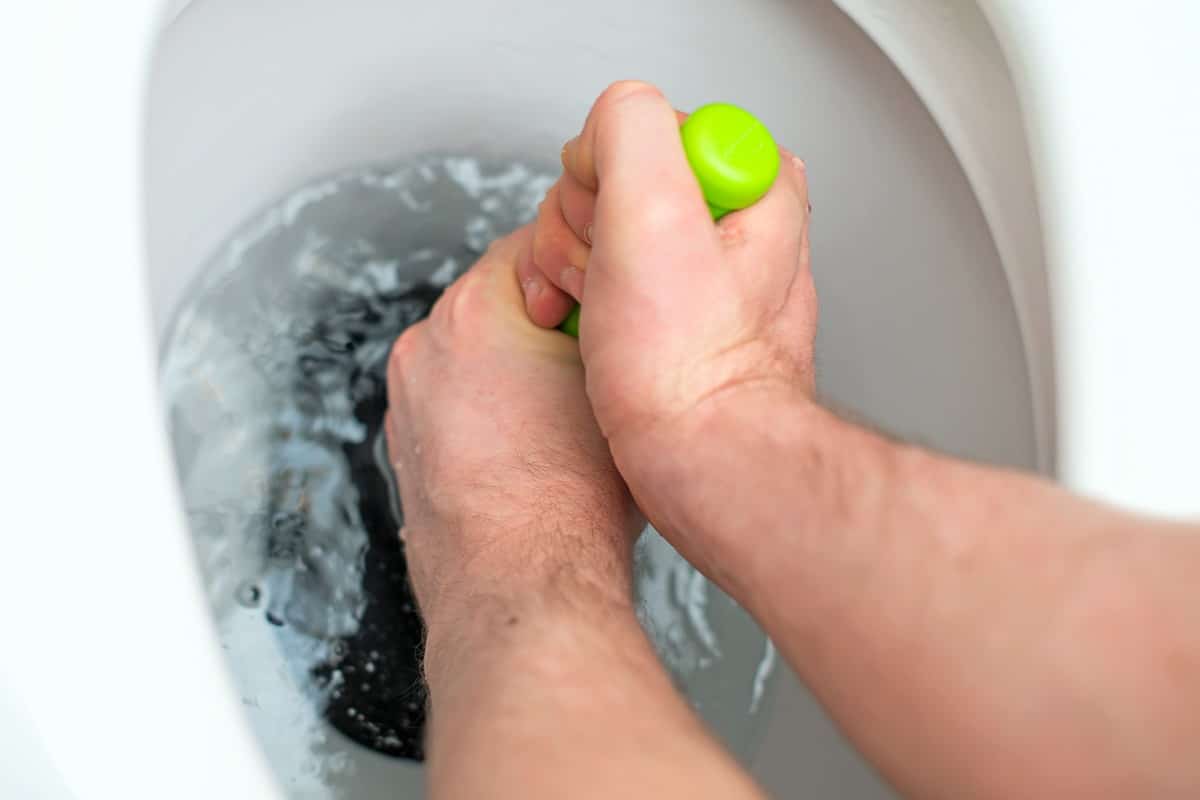
Preventive Measures for Toilet Paper Build-Up
Preventing toilet paper build-up is essential for maintaining a functional plumbing system. Implementing effective strategies can help avoid blockages and ensure smooth operation.
How to Prevent Toilet Paper from Clogging Drains
Property owners can take several steps to prevent toilet paper from clogging drains:
- Use Dissolvable Toilet Paper: Opt for toilet paper that dissolves quickly in water.
- Limit Toilet Paper Use: Use only the necessary amount to minimise the risk of clogs.
- Educate Household Members: Inform everyone about the importance of using toilet paper sparingly.
Best Practices for Using Toilet Paper Responsibly
Adopting responsible toilet paper usage practices can significantly reduce the risk of blockages:
- Avoid Flushing Non-Flushable Items: Ensure only toilet paper and human waste are flushed.
- Use Single-Ply Toilet Paper: Single-ply options dissolve more easily and are less likely to cause clogs.
- Regular Maintenance: Schedule regular plumbing inspections to catch potential issues early.
How Low-Flow Toilets Help in Reducing Blockages
Low-flow toilets can play a crucial role in reducing blockages:
- Efficient Water Use: Low-flow toilets use less water per flush, reducing the likelihood of overwhelming the drainage system.
- Improved Flushing Mechanism: Modern low-flow toilets are designed to flush more efficiently, helping to prevent clogs.
Role of Courtesy Flushes in Preventing Build-Up
Courtesy flushes can be an effective method to prevent toilet paper build-up:
- Midway Flushing: Flushing midway through use can help manage the amount of toilet paper in the bowl, reducing the risk of clogs.
- Preventing Accumulation: Regular courtesy flushes prevent excessive accumulation of toilet paper, ensuring smoother drainage.
By following these preventive measures, property owners can maintain a functional plumbing system and avoid the complications associated with toilet paper build-up.
Common Causes of Blocked Drains Beyond Toilet Paper
Blocked drains can result from various common items and substances. Understanding these causes can help in preventing and addressing blockages effectively.
Other Common Items That Cause Drain Blockages
Several items frequently cause drain blockages:
- Hair: Commonly found in bathroom drains, hair can combine with soap scum to form clogs.
- Food Scraps: Often responsible for kitchen drain blockages, food scraps can accumulate and obstruct pipes.
- Grease and Oil: These substances can solidify in pipes, leading to significant blockages.
- Foreign Objects: Items such as toys, wipes, feminine hygiene products, and cotton swabs can cause severe blockages if flushed or washed down drains.
How Hair and Soap Scum Contribute to Clogs
Hair and soap scum are major contributors to bathroom drain clogs:
- Hair: Hair strands can easily get caught in drain pipes, creating a net that traps other debris.
- Soap Scum: Soap residue can build up over time, combining with hair to form stubborn clogs.
Impact of Food Scraps and Grease on Kitchen Drains
Food scraps and grease are common culprits in kitchen drain blockages:
- Food Scraps: Small food particles can accumulate in pipes, leading to blockages.
- Grease and Oil: When poured down the drain, grease and oil can solidify and adhere to pipe walls, causing significant obstructions.
How Foreign Objects and Non-Flushable Items Block Drains
Foreign objects and non-flushable items can cause severe blockages:
- Foreign Objects: Items such as toys, jewellery, and small household objects can accidentally fall into drains and cause blockages.
- Non-Flushable Items: Products like wet wipes, feminine hygiene products, and cotton swabs do not dissolve in water and can create major clogs when flushed.
By being aware of these common causes, property owners can take preventive measures to maintain clear and functional drains. Regular maintenance and proper disposal practices are essential in preventing blockages.
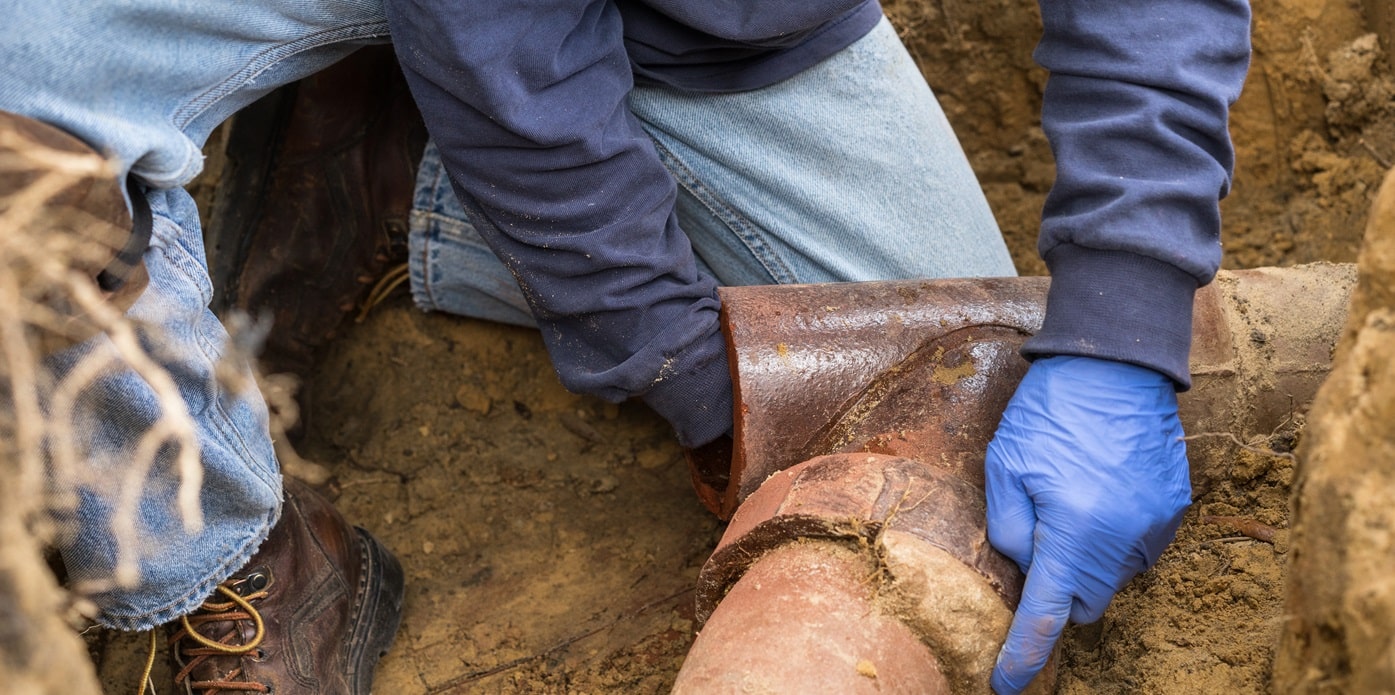
Tree Roots and Their Role in Blockages
Tree roots can significantly impact plumbing systems by infiltrating and blocking pipes. Understanding how this occurs and taking preventive measures is essential for maintaining clear drains.
How Tree Roots Infiltrate and Block Pipes
Tree roots seek out moisture and nutrients, often finding their way into plumbing systems through small cracks or joints in pipes. Once inside, roots can expand and create blockages by trapping debris, including toilet paper and other materials.
Signs of Tree Root Intrusion in Plumbing Systems
Identifying tree root intrusion early can prevent severe blockages. Common signs include:
- Slow Draining: Water drains slowly from sinks, toilets, and other fixtures.
- Gurgling Sounds: Unusual noises from the plumbing system when water is used.
- Frequent Clogs: Recurrent blockages that are difficult to clear.
- Sewage Backups: Water or sewage backing up into the home, particularly in the basement or lower levels.
Preventing Tree Root-Related Blockages
Property owners can take several steps to prevent tree root-related blockages:
- Regular Inspections: Schedule regular plumbing inspections to detect early signs of root intrusion.
- Root Barriers: Instal physical barriers to prevent roots from reaching pipes.
- Tree Placement: Plant trees and shrubs away from sewer lines and plumbing systems.
- Pipe Maintenance: Ensure pipes are in good condition and repair any cracks or joints promptly.
Professional Services for Tree Root Removal
When tree roots cause significant blockages, professional services may be required:
- CCTV Drain Surveys: Use of cameras to inspect pipes and identify root intrusion.
- Hydro Jetting: High-pressure water jetting to clear roots and debris from pipes.
- Root Removal: Specialised equipment to cut and remove roots from within pipes.
- Pipe Repair and Replacement: Repairing or replacing damaged pipes to prevent future root intrusion.
By understanding the role of tree roots in blockages and taking preventive measures, property owners can maintain a functional plumbing system and avoid costly repairs.
Mineral Build-Up and Hard Water Issues
Mineral build-up and hard water can cause significant problems in plumbing systems. Understanding how these issues arise and how to address them is crucial for maintaining clear and functional pipes.
How Hard Water Leads to Mineral Accumulation in Pipes
Hard water contains high levels of dissolved minerals, primarily calcium and magnesium. When hard water flows through pipes, these minerals can precipitate out and accumulate on the pipe walls. Over time, this build-up can narrow the pipes and restrict water flow, leading to blockages.
Signs of Mineral Build-Up in Plumbing Systems
Identifying mineral build-up early can prevent severe blockages. Common signs include:
- Reduced Water Pressure: A noticeable decrease in water pressure from faucets and showers.
- White or Chalky Deposits: Visible mineral deposits on fixtures and around faucets.
- Frequent Clogs: Recurrent blockages in sinks, showers, and other fixtures.
- Discoloured Water: Water with a cloudy or milky appearance due to suspended mineral particles.
How Water Softeners Help in Preventing Mineral Blockages
Water softeners can effectively prevent mineral blockages by removing calcium and magnesium from the water. These devices work by exchanging the hard minerals with sodium or potassium ions, resulting in softened water that is less likely to cause build-up. Benefits of using water softeners include:
- Prolonged Pipe Life: Reduced mineral accumulation extends the lifespan of pipes and fixtures.
- Improved Water Flow: Softened water maintains consistent water pressure and flow.
- Reduced Maintenance: Fewer clogs and blockages mean less frequent need for plumbing maintenance.
Regular Maintenance Practices to Mitigate Hard Water Issues
Regular maintenance can help manage hard water issues and prevent mineral build-up:
- Descaling Treatments: Periodic use of descaling agents to dissolve and remove mineral deposits from pipes.
- Routine Inspections: Regular plumbing inspections to detect early signs of mineral accumulation.
- Cleaning Fixtures: Regular cleaning of faucets, showerheads, and other fixtures to remove visible deposits.
- Installing Water Softeners: Using water softeners to treat hard water before it enters the plumbing system.
By implementing these practices, property owners can effectively manage hard water issues and maintain a functional plumbing system.
Ageing and Incorrectly Installed Pipes
Ageing and incorrectly installed pipes can significantly contribute to blockages in plumbing systems. Understanding these issues and how to address them is crucial for maintaining clear and functional drains.
How Ageing Pipes Contribute to Blockages
Ageing pipes are prone to several issues that can lead to blockages:
- Corrosion: Over time, pipes can corrode, leading to rough surfaces that trap debris.
- Wear and Tear: Older pipes may develop cracks or leaks, allowing foreign materials to enter and cause blockages.
- Reduced Diameter: Mineral build-up and corrosion can reduce the internal diameter of pipes, restricting water flow and increasing the likelihood of clogs.
Risks Associated with Incorrectly Installed Pipes
Incorrectly installed pipes pose several risks:
- Improper Slope: Pipes that are not correctly sloped can cause water to pool, leading to sediment build-up and blockages.
- Loose Connections: Poorly connected pipes can leak or allow debris to enter, causing clogs.
- Incompatible Materials: Using incompatible materials can lead to rapid deterioration and blockages.
Identifying and Addressing Issues
Property owners can identify and address issues with ageing or incorrectly installed pipes through the following steps:
- Regular Inspections: Schedule regular plumbing inspections to detect early signs of wear, corrosion, or improper installation.
- Professional Assessment: Hire a professional plumber to assess the condition of pipes and recommend necessary repairs or replacements.
- Upgrading Pipes: Replace old or damaged pipes with modern, durable materials to prevent future blockages.
Benefits of Regular Plumbing Inspections
Regular plumbing inspections offer several benefits:
- Early Detection: Identifying issues early can prevent severe blockages and costly repairs.
- Improved Efficiency: Ensuring pipes are in good condition maintains optimal water flow and system efficiency.
- Extended Lifespan: Regular maintenance extends the lifespan of plumbing systems, reducing the need for frequent replacements.
By addressing the issues associated with ageing and incorrectly installed pipes, property owners can maintain a functional plumbing system and prevent blockages. Regular inspections and professional assessments are key strategies in managing these challenges.
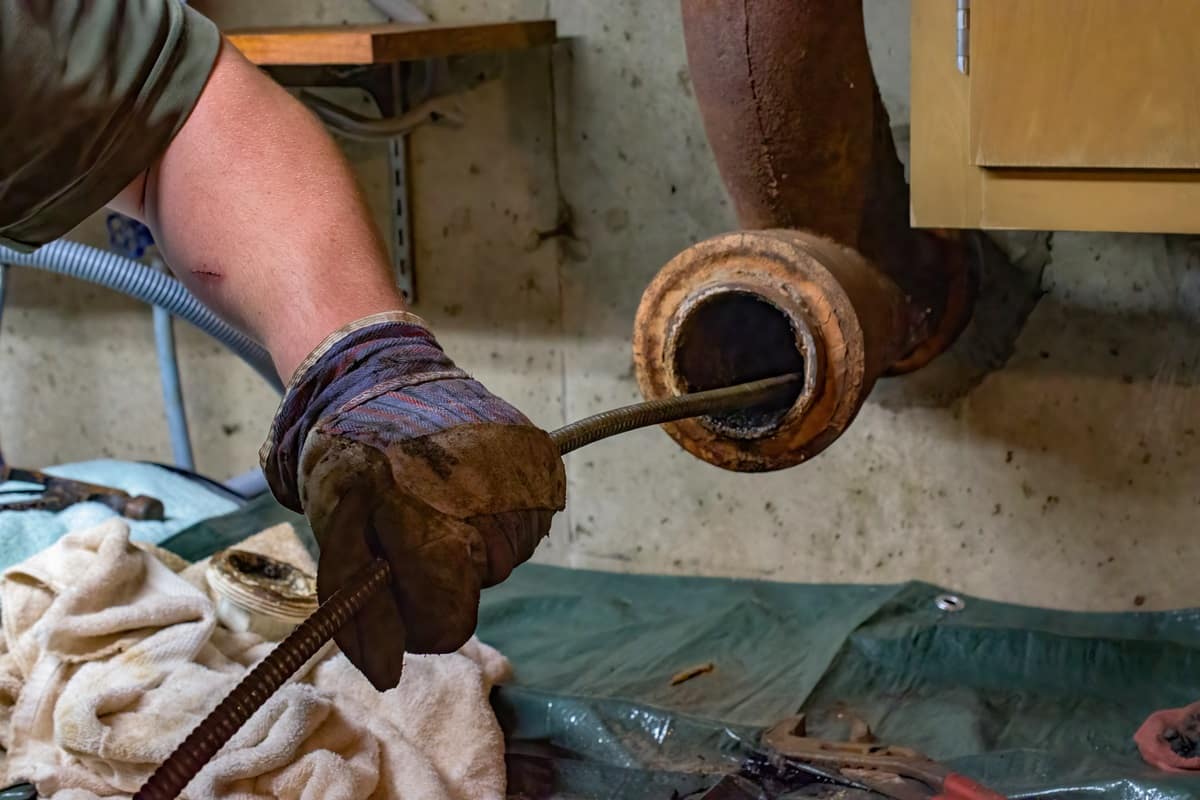
Immediate Actions for Suspected Blockages
When a blockage is suspected, taking immediate action can prevent further complications and damage to the plumbing system. Here are the steps property owners should follow.
What Should Property Owners Do If They Suspect a Blockage?
If a blockage is suspected, property owners should:
- Stop Using the Affected Fixture: Avoid using the sink, toilet, or drain that appears to be blocked to prevent overflow and further damage.
- Identify the Source: Determine which fixture is affected and whether the blockage is localised or affecting multiple drains.
How Can Natural Cleaners Like Baking Soda and Vinegar Help?
Natural cleaners such as baking soda and vinegar can be effective in clearing minor blockages:
- Baking Soda and Vinegar Method:
- Step 1: Pour a cup of baking soda down the drain.
- Step 2: Follow with a cup of vinegar.
- Step 3: Allow the mixture to sit for 15-30 minutes.
- Step 4: Flush with hot water to clear the blockage.
When Should Professional Plumbing Services Be Contacted?
Professional plumbing services should be contacted if:
- Persistent Blockages: The blockage does not clear after using natural cleaners or a plunger.
- Multiple Fixtures Affected: More than one fixture is experiencing drainage issues, indicating a possible main sewer line blockage.
- Sewage Backup: There is evidence of sewage backing up into the home, which requires immediate professional attention.
What Tools and Equipment Are Useful for Immediate Blockage Removal?
Several tools and equipment can be useful for immediate blockage removal:
- Plunger: Effective for clearing minor clogs in toilets and sinks.
- Drain Snake: A flexible auger used to dislodge blockages deeper in the pipes.
- Plumbing Auger: A more robust tool for clearing severe blockages in toilets.
- Hydro Jetting: High-pressure water jetting to clear stubborn blockages, typically performed by professionals.
By following these steps and using the appropriate tools, property owners can address suspected blockages promptly and effectively.
Long-Term Maintenance Strategies
Implementing long-term maintenance strategies is essential for preventing blockages and ensuring the smooth operation of plumbing systems. Here are the best practices for regular drain maintenance and education on proper disposal habits.
Best Practices for Regular Drain Maintenance
Regular drain maintenance can prevent blockages and extend the lifespan of plumbing systems. Key practices include:
- Routine Cleaning: Use natural cleaners like baking soda and vinegar to keep drains clear.
- Avoiding Harsh Chemicals: Refrain from using chemical drain cleaners that can damage pipes.
- Regular Flushing: Periodically flush drains with hot water to remove minor build-ups.
Frequency of Professional Inspections
Scheduling professional inspections is crucial for early detection of potential issues. Recommended frequency:
- Annual Inspections: At least once a year for residential properties.
- Bi-Annual Inspections: Twice a year for commercial properties or older plumbing systems.
Role of Drain Philtres and Proper Waste Disposal
Drain philtres and proper waste disposal play significant roles in preventing blockages:
- Drain Philtres: Instal philtres in sinks and showers to catch hair, food particles, and other debris.
- Proper Waste Disposal: Ensure that only appropriate items are flushed or washed down drains. Avoid disposing of grease, oil, and non-flushable items in sinks and toilets.
Educating Household Members on Proper Disposal Habits
Educating household members on proper disposal habits is essential for maintaining clear drains:
- Clear Guidelines: Provide clear guidelines on what can and cannot be flushed or washed down drains.
- Regular Reminders: Regularly remind household members of proper disposal practices.
- Visual Aids: Use visual aids, such as posters or labels, near sinks and toilets to reinforce proper habits.
By following these long-term maintenance strategies, property owners can effectively prevent blockages and maintain a functional plumbing system. Regular maintenance, professional inspections, and proper disposal habits are key components of a comprehensive approach to drain care.
Final Thoughts and Conclusion
Maintaining a functional plumbing system requires understanding the common causes of blocked drains and implementing effective prevention strategies. This guide has covered various aspects of toilet paper build-up and other common causes of blockages, providing practical advice for property owners.
Key Takeaways from This Guide
- Understanding Causes: Recognise that excessive toilet paper use, hair, soap scum, food scraps, grease, and foreign objects are common causes of blockages.
- Prevention Strategies: Implement preventive measures such as using dissolvable toilet paper, installing drain philtres, and educating household members on proper disposal habits.
- Regular Maintenance: Schedule regular plumbing inspections and perform routine maintenance to catch potential issues early.
Importance of Early Intervention
Early intervention is crucial in preventing severe blockages. Addressing minor issues promptly can prevent them from escalating into major problems that require costly repairs. Regular inspections and maintenance help in identifying and resolving issues before they become severe.
Ensuring Functional Plumbing Systems
Property owners can ensure their plumbing systems remain functional by:
- Adopting Best Practices: Follow best practices for using and disposing of toilet paper and other materials.
- Regular Inspections: Schedule annual or bi-annual plumbing inspections to detect and address potential issues.
- Educating Household Members: Inform everyone in the household about proper disposal habits and the importance of using plumbing fixtures responsibly.
Resources for Further Assistance and Information
For further assistance and information, consider the following resources:
- Professional Plumbing Services: Contact local plumbing professionals for inspections, maintenance, and emergency services.
- Educational Materials: Access online articles, videos, and guides on plumbing maintenance and best practices.
- Community Programmes: Participate in community programmes that offer workshops and resources on maintaining functional plumbing systems.
By following these guidelines and utilising available resources, property owners can effectively manage and prevent blockages, ensuring a smooth and functional plumbing system.
